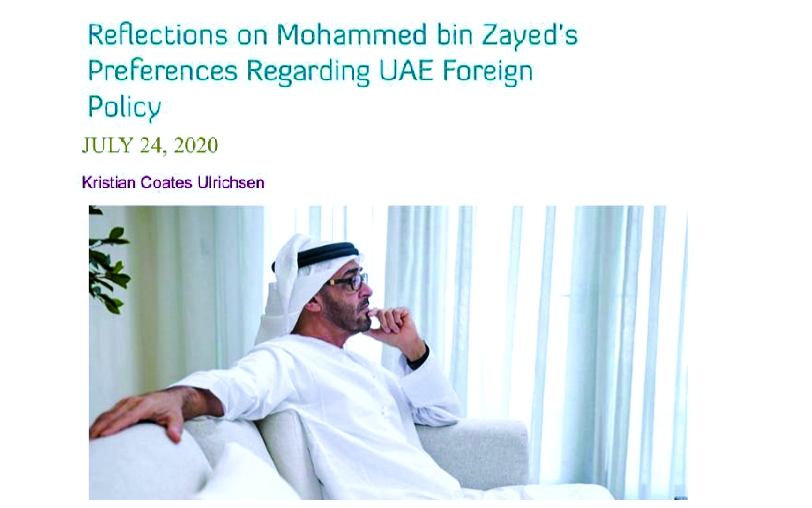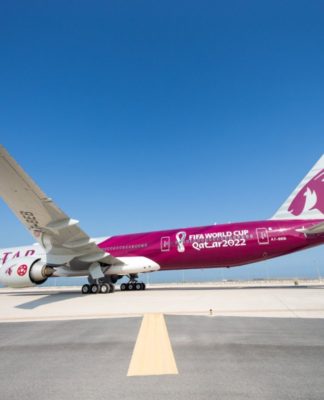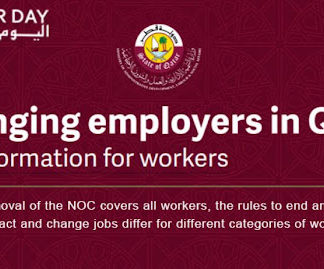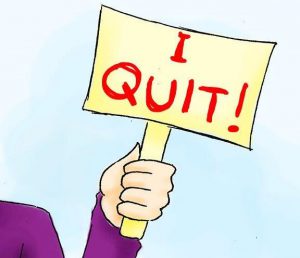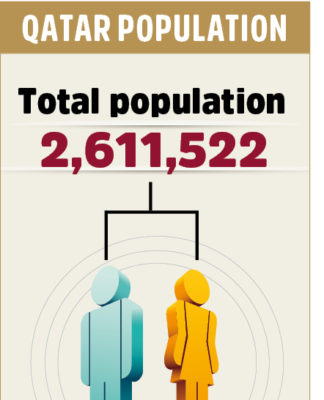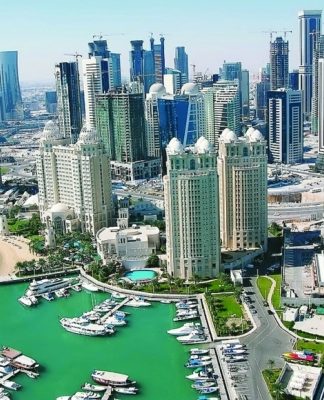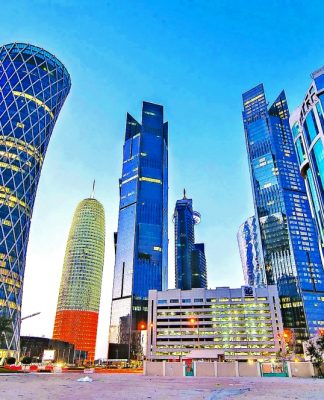Saudi Arabia’s reconciliation with Qatar threatens Bin Zayed’s plan to expand its influence
Abu Dhabi and Riyadh have a long history of tension, border disputes and clashes
A report by the Washington DC Center confirmed that the approach taken by Mohammed bin Zayed puts the UAE at risk of getting involved in seemingly not-for-profit regional disputes and reckless behavior in foreign-centered foreign policy rather than stable institutional interests.
The report published yesterday by researcher Christian Coutts Ulrichsen and his translation in the East highlighted that Emirati interests conflict with Saudi Arabia in Yemen after the subsequent announcement of “autonomy” by the Southern Transitional Council and the severe collapse of the Riyadh agreement, which could lead to other tensions, especially if US officials continue to urge The Saudis are to reconcile with Qatar, far from Abu Dhabi, which opposes ending the blockade.
Losing policy
The report confirmed that Mohammed bin Zayed presented himself early on as the “savior” of Saudi Arabia and played a major role in defending Mohammed bin Salman during his meetings with Obama administration directors in Washington, DC in 2015.
Three years later, in the wake of the killing of Jamal Khashoggi at the Saudi consulate in Istanbul, it was the UAE leaders and diplomats who secretly communicated with the Trump administration and congressional officials to make clear that there was no alternative to Muhammad bin Salman.
The report said that the approach taken by Mohammed bin Zayed exposes the UAE to the risk of being involved in regional conflicts that seem not to be profitable and the behavior of foreign policy based on personalities rather than stable institutional interests.
The report stated that the failure of Khalifa Haftar in Tripoli in June 2020 is an example of this because he risks pulling the UAE, along with Russia, Egypt and Turkey, into a deeper conflict.
In addition, Emiratis were involved in Robert Muller’s investigation of foreign influence on the United States and subsequent court proceedings as well. As the increased appetite for risk has brought volatility and unpredictability into the foreign policy-making of the Emirates, it will be useful to assess the degree to which Mohammed bin Zayed understands the lessons and restrictions imposed on policy mistakes and change course, such as reshaping its means in the Yemen war alongside the blockade of Qatar.
The report pointed out that it is not clear whether the redeployment of the UAE forces in Yemen has been coordinated with Saudi Arabia or even communicated with them in advance, and its reckless style is likely to cause tension between the two parties.
The subsequent announcement of “autonomy” by the leadership of the Southern Transitional Council (headquartered in Abu Dhabi) in April 2020, after the severe collapse of the Riyadh agreement signed by the Southern Transitional Council and the Yemeni-backed Hadi government in November 2019, are other indications that The UAE and Saudi interests in the political future of Yemen in the post-conflict stage, in the end, do not coincide in any way.
Against the Arab Spring
Also in 2011, Mohammed bin Zayed referred to Qatar’s firm approach to the Arab uprisings and believed that Doha supported the popular uprisings against authoritarian leaders, the report indicated.
This is what motivated him to develop an interventionist approach on his own, albeit in a direction totally opposed to the direction of Doha.
The UAE approached Saudi Arabia during 2010, partly to confront Qatar but also to increase its weight in regional geopolitics, especially towards Iran.
This initially began during the reign of King Abdullah bin Abdul Aziz and in support of the common interest in suppressing the Arab Spring’s challenge to the regional system, but it grew faster, deeper and much more integrated after the arrival of King Salman bin Abdulaziz to power.
The rapid rise of Muhammad bin Salman in 2015. Far from being allies, the UAE and Saudi Arabia have a long history of tension in relations, from border disputes in the 1950s to the 1970s to a sharp rise in friction in 2000 that culminated in a sharp conflict in 2009 due to monetary union It was planned for the Gulf Cooperation Council and Saddam short but sharp in March 2010.
The report continued: The relationship between Bin Salman and Bin Zayed illustrates one of the ways in which the UAE’s regional and foreign policy has evolved from reliance on institutional ties and relations between the United States toward a network approach that identifies and operates through key leaders in the region. This is evident not only with Muhammad bin Salman but also for figures such as the defected general Khalifa Haftar in eastern Libya and leaders of the Southern Transitional Council in Yemen, who have long resided in Abu Dhabi.
Such relationships make the UAE vulnerable to accusations that it is supporting actors and groups in Libya and Yemen that are undermining internationally recognized governments and interfering in their internal affairs – ironically, what Abu Dhabi has been doing has accused Doha since 2011.
Long-term changes
The report said, in late 2001 the September 11 terrorist attacks in the United States, in which two Emiratis were among the 19 hijackers and found that much financial and logistical support had poured through the UAE.
Mohammed bin Zayed was the one who organized most of his country’s political responses to the events of September 11, by contrast, Mohammed bin Zayed worked closely with his American counterparts in ways that went beyond his “official” position at the time as chief of staff of the armed forces.
This was the precursor to his subsequent promotion in the line of succession as Deputy Crown Prince of Abu Dhabi in 2003, and to the crown prince when his father died.
By the late 2000s, Mohammed bin Zayed had become a de facto center of influence and power, first within Abu Dhabi itself, and then in 2010 across the Emirates.
In 2008, the global financial crisis affected Dubai strongly, as it was unable to fully repay the debts estimated at more than $ 142 billion.
Abu Dhabi extended $ 10 billion in aid to tackle the growing debt crisis that at one point threatened financial panic in Dubai, while the sudden renaming of the tallest building in the world from the original Burj Dubai to the Burj Khalifa on its opening day in January 2010 was the most prominent manifestation of the new influence. The Emirate of Abu Dhabi over Dubai, while the economic difficulties faced by Dubai – which have been repeated since 2017 contributed to the consolidation of the authority of Abu Dhabi.
The report continued: Over the decade that followed the Arab Spring, the UAE – under the direction of Mohammed bin Zayed – acted, in many cases strongly, against a perceived threat from political Islam.
As Peter Salisbury noted in the recent Chatham House report on the foreign policy of the UAE, under the leadership of Bin Zayed, the state has come to view these issues as an “existential threat to its broad secular approach to the government as well as to the stability of the” status quo “powers in the region.”
During the same period, Abu Dhabi approached Saudi Arabia, where Crown Prince – Mohammed bin Zayed and Mohammed bin Salman worked to craft a geopolitical axis to reshape regional politics in the Arabian Peninsula.
According to the report, the approach followed is zero tolerance towards any form of opposition or Islamic activity, which is the most striking feature of Mohammed bin Zayed’s leadership a decade ago. Bin Zayed believes that local Islamists have perceptions of political power within the UAE and pose a threat to his secular vision of the development model in the UAE.
He had informed US officials in 2006 that he believed the Muslim Brotherhood would win the elections in Dubai. After the emergence of Emirati Islamists in the March 2011 petition calling for political (modest) reform in the UAE, especially with the emergence of some victories for Islamic parties in the elections in the countries of the region that underwent political transformations in the Arab Spring, the nature and urgency of the Islamic threat to Bin Zayed increased.
His security-focused approach has gradually expanded to the view that all forms of political Islam pose an existential threat not only to the UAE, but also to the region as a whole.














